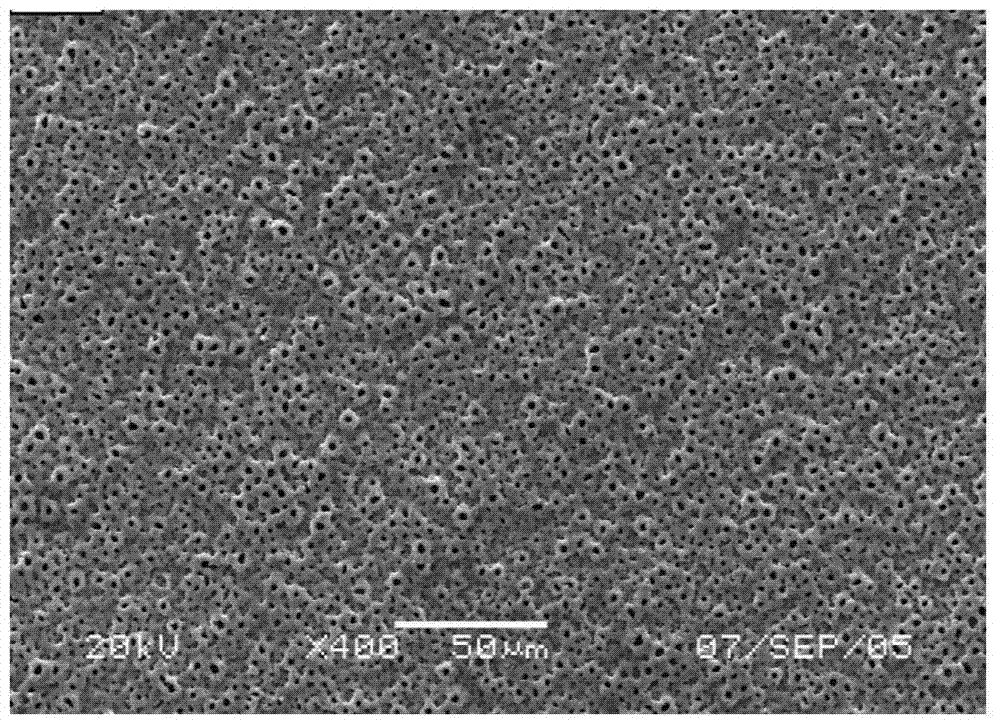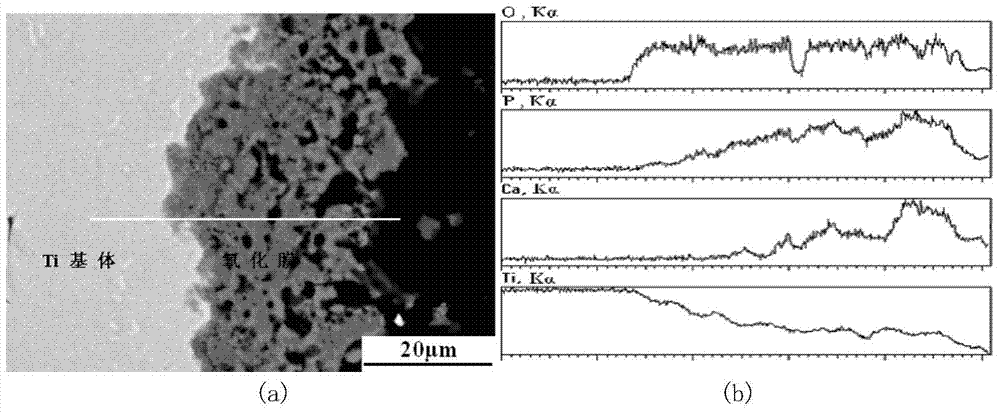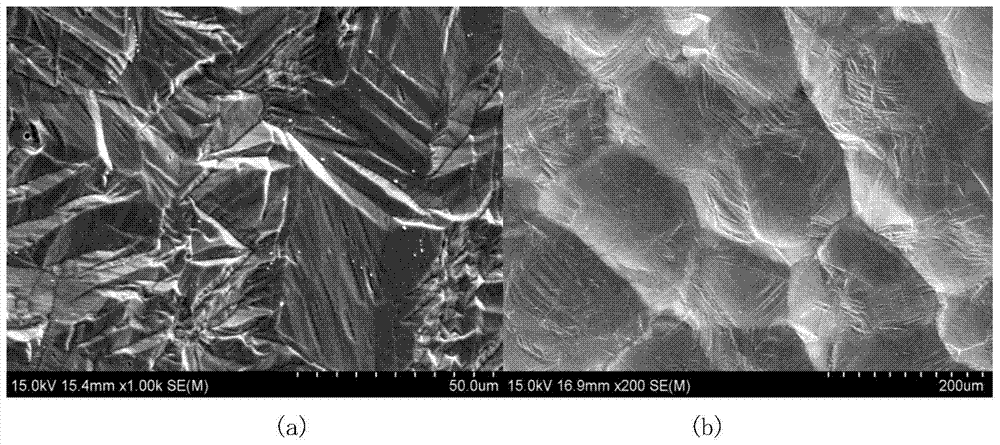Preparation method of tissue suitable type composite material dental implant
A dental implant and composite material technology, applied in the field of biomedical composite material preparation, to achieve high biological activity, firm tissue integration, and short implant healing period
- Summary
- Abstract
- Description
- Claims
- Application Information
AI Technical Summary
Problems solved by technology
Method used
Image
Examples
Embodiment 1
[0026] A method for preparing a tissue-compatible composite dental implant, comprising the following steps:
[0027] (1) Perform micro-arc oxidation treatment on the surface of titanium or titanium alloy implants in contact with bone tissue, and perform micro-arc oxidation in a calcium-phosphorus electrolyte with a mass ratio of calcium and phosphorus of Ca / P=5. Time T=15min, electrode voltage U=450V, electrode frequency f=600Hz, a layer of calcium and phosphorus-containing porous composite ceramic membrane with biological activity is formed;
[0028] (2) The surface part of the implant in contact with the soft tissue was etched in a mixed etching agent composed of hydrofluoric acid and hydrochloric acid. The volume ratio of 47% HF to 38% HCl was 50:50. The etching treatment temperature is 55° C., and the etching treatment time is 5 minutes.
[0029] (3) Immerse the dental implant after micro-arc oxidation and surface etching treatment in a composite simulated body fluid cont...
Embodiment 2
[0034] A method for preparing a tissue-compatible composite dental implant, comprising the following steps:
[0035] (1) Perform micro-arc oxidation treatment on the surface part of the titanium or titanium alloy implant in contact with bone tissue, and perform micro-arc oxidation in a calcium-phosphorus electrolyte with a mass ratio of calcium and phosphorus of Ca / P=3. Time T=10min, electrode voltage U=500V, electrode frequency f=700Hz, a layer of calcium and phosphorus-containing porous composite ceramic membrane with biological activity is formed;
[0036] (2) The surface part of the implant in contact with the soft tissue was etched in a mixed etching agent composed of hydrofluoric acid and hydrochloric acid. The volume ratio of 47% HF to 38% HCl was 50:50. The etching treatment temperature is 55° C., and the etching treatment time is 8 minutes.
[0037] (3) Immerse the dental implant after micro-arc oxidation and surface etching treatment in a composite simulated body fl...
Embodiment 3
[0039] A method for preparing a tissue-compatible composite dental implant, comprising the following steps:
[0040] (1) Perform micro-arc oxidation treatment on the surface part of the titanium or titanium alloy implant in contact with bone tissue, and perform micro-arc oxidation in a calcium-phosphorus electrolyte with a mass ratio of calcium to phosphorus Ca / P=6. Time T=20min, electrode voltage U=400V, electrode frequency f=650Hz, a layer of calcium and phosphorus-containing porous composite ceramic membrane with biological activity is formed;
[0041] (2) The surface part of the implant in contact with the soft tissue was etched in a mixed etching agent composed of hydrofluoric acid and hydrochloric acid. The volume ratio of 47% HF to 38% HCl was 50:50. The etching treatment temperature is 55° C., and the etching treatment time is 10 minutes.
[0042] (3) Immerse the dental implant after micro-arc oxidation and surface etching treatment in a composite simulated body fluid...
PUM
 Login to View More
Login to View More Abstract
Description
Claims
Application Information
 Login to View More
Login to View More - R&D
- Intellectual Property
- Life Sciences
- Materials
- Tech Scout
- Unparalleled Data Quality
- Higher Quality Content
- 60% Fewer Hallucinations
Browse by: Latest US Patents, China's latest patents, Technical Efficacy Thesaurus, Application Domain, Technology Topic, Popular Technical Reports.
© 2025 PatSnap. All rights reserved.Legal|Privacy policy|Modern Slavery Act Transparency Statement|Sitemap|About US| Contact US: help@patsnap.com



